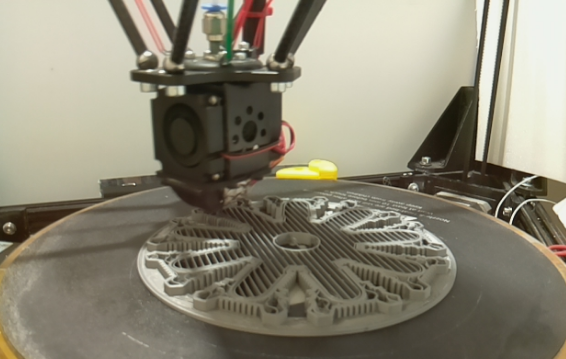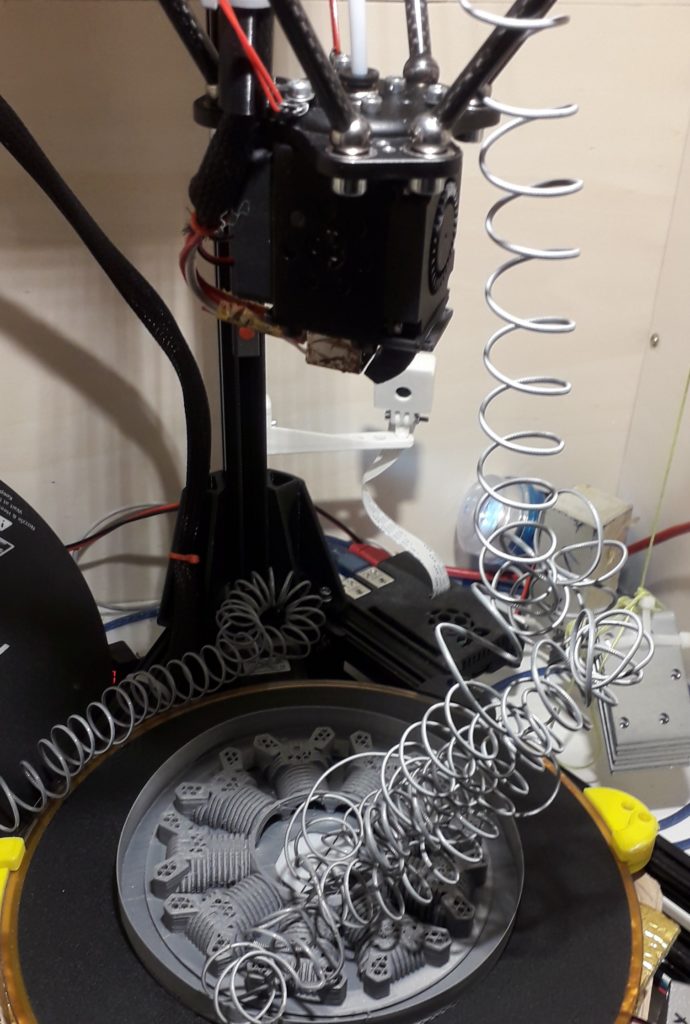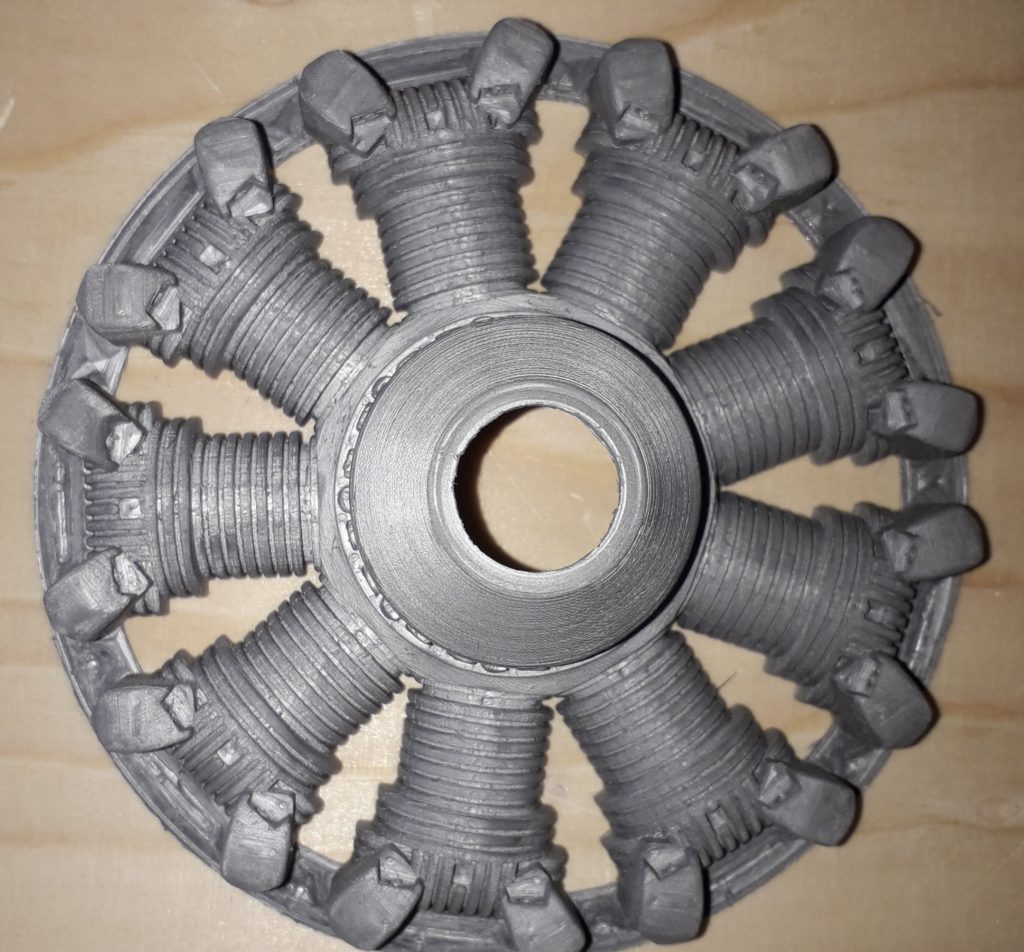This time of year other things need my attention, so I’m a bit slow at the moment. I’m still working on the tail side plating near the stabilizer of the SA750.
However, something as mundane as ‘a bit of plain 2mm iron strip’ proves hard to come by at the moment. Everywhere I look I can get stainless steel, but I need the lowest, softest iron I can get. I need it to make those small pesky tags to attaching the plating. This means drilling the holes at the right size for a 2 mm tap, without braking everything. As these things go, the first side went without a hitch, repeating the other side has wipes out my stash of properly sized drills. I am now waiting for Santa to deliver more.
So, in the meantime, I got a request for some multi cylinder gadgets. No problem, he says optimistically, after all the printer prints nice and smooth, at a reasonable high speed, what could go wrong?
Nothing, just that my standard slicer (the one I cursed before) did not want to know. So again back to Cura. At least we are on talking terms, it’s just a matter of dialing in all these variables.
And so you discover that PLA does shrink. Most parts I have printed never had any issues, but this one was challenging. No matter what I tried, it kept warping and popping loose from the bed. At 140 mm diameter, a 1 % shrinkage is 1.4mm. And it does shrink more then that.
Anyway, he who wastes a lot of plastic, will succeed. One of the ”secrets” I discovered was a special magic substance for coating my super duper sticky bed. (as in, I never got to stick large parts to it). There are stories around about using pva based hairspray and such. Then one dark night the lightbulb went on: I’ve got loads of PVA, it’s called wood-glue. Squirted a bit in a container, added a bit of water, mix and apply. (I’ve seen suggestions for a 10-15% ratio water/glue.) And to my astonishment, my very unwilling parts stick. No more warping, no more popping loose.

If that was all there is to the story, I would have been finished long ago. But Murphy had a good time!
- My extruder stopped at random times, mostly when I was not watching.
- The feed tube at the top of the filament heater popped out at midnight.
- The filament escaped from the extruder
- Of course a blocked nozzle to make it more fun.
- My printer can print quite speedily, but that proves its (my) downfall.
- Printed parts started cracking after a day.
The extruder problem was caused by a broke wire at the connector motor. Why now? Why not now? It took a bit of searching to locate that problem.
Feed tube is held by an Festo connector. It just got tired from being moved around continuously. Fixed that.
Filament guide had to be remade, including better alignment of feed rollers and tubes.

Blocking nozzle, obvious some cr@p in there.
Printing too fast: oops, actually, that is fine for small parts, where shrinkage is nu issue. Bigger parts, contrary to gut feeling, need to be printed much slower, so that the hot plastic does not cover more than 2-3cm in length.
So after all this was overcome, I have now printed multiple parts where the print-times are in excess of 18 hours. As always, the end result is much experience gained, a much better printer, and plans for a much larger volume version are being hatched!
The result is a nicely printed 9 cylinder dummy engine, printed at 0.1mm layer (with variable layer thickness at the top) speed of most sections ca 60 mm/sec. Bed is 45 C, nozzle at 215 C. GCODE file is approx 75Meg.
